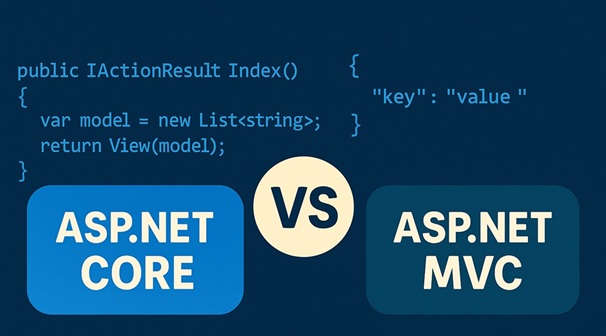Introduction
The demand for digital products is growing faster than most companies can hire and train talent. That’s why software development outsourcing has become one of the most reliable strategies for scaling engineering capacity. By partnering with an outsourcing software development company, businesses can accelerate delivery, reduce costs, and access specialized expertise that may not exist in-house.
The logic is simple: instead of shouldering the full cost of recruitment, infrastructure, and training, organizations outsource software development services to external partners. Whether it’s a complete project, an additional outsource software development team, or specific programmer outsourcing, this approach allows companies to stay competitive while focusing on their core business.
What is Software Development Outsourcing?
Software development outsourcing refers to the practice of delegating part or all of a development project to an external provider. The provider could be a nearshore team, an offshore partner, or even a local vendor. No matter the location, the idea is the same: treat software as a service that can be designed, built, and maintained by a specialized team.
When organizations talk about software development outsource or development outsourcing, they often mean one of several models:
- Project-based outsourcing development. The partner handles everything from design to deployment.
- Dedicated teams. A group of engineers works exclusively on your product, but remains employed by the vendor.
- Staff augmentation. Companies outsource development talent, such as front-end or backend developers, to fill skill gaps.
This flexibility explains why IT development outsourcing and custom software development outsourcing are rising trends globally. Enterprises, startups, and even government agencies use these models when they need to scale quickly or when they lack internal technical expertise.
Why Outsource Software Development?
The next question is obvious: why outsource software development at all? What’s the real payoff compared to hiring in-house?
Cost Efficiency
The most cited reason is cost. Building an in-house team requires recruiting, onboarding, training, and ongoing payroll - even during downtime. By contrast, outsourcing of software development allows businesses to pay only for the capacity they need. Rates vary by region, but outsourcing often saves 30–60% of total development costs.
Access to Global Talent
Another critical factor is access to expertise. A company in the U.S. may struggle to hire niche AI specialists or experienced DevOps engineers. With software product development outsourcing, those skills are a call away. Outsourcing partners have pipelines of talent ready to deploy.
Focus on Core Competencies
Outsourcing lets leadership focus on business growth, product strategy, and customer relationships while leaving the technical heavy lifting to experts. By adopting outsourcing software product development, businesses avoid distraction and move faster.
Faster Time to Market
Because outsourcing companies have pre-built infrastructure, they can kick off projects immediately. No lengthy hiring cycles. A reliable outsourcing development company can often deliver MVPs weeks or months sooner than an internal team starting from zero.
In other words, the benefits of outsource software development services go beyond budget. It’s about agility, speed, and strategic focus.
Types of Outsourcing Software Development Services
The term “outsourcing” covers a wide range of services. Knowing which type fits your project is essential for success.
Dedicated Development Teams
A software development outsourcing company can provide an entire team that works exclusively on your project. This is especially popular for long-term engagements like SaaS platforms or enterprise applications. It ensures continuity and deeper product knowledge, while the vendor manages contracts, payroll, and HR.
Staff Augmentation
When deadlines loom, companies may opt for outsourcing developer contracts to quickly bring in specialized skills. For example, if a startup needs React developers for a three-month sprint, outsourcing software developers through staff augmentation is often more efficient than hiring full-time. This model is also known as outsource programmer support.
Full Project Outsourcing
Some businesses prefer to hand over entire outsourcing software development projects to a vendor. In this scenario, the vendor manages requirements, design, coding, testing, and deployment. Companies that outsource software product development often do this to free internal teams for strategic innovation.
Outsourced Product Development
Another variation is outsourced software product development - where a vendor builds a complete product (such as a SaaS platform or mobile application) under contract. This is common among non-tech companies that want to launch digital offerings without becoming software houses themselves.
From outsourced development services to outsourcing software development services, the range of possibilities makes it easy to find a model aligned with budget, timeline, and risk tolerance.
Outsourcing Development Models Compared
Not all outsourcing is created equal. Businesses must understand the different models of outsourcing software development services and how they compare.
Onshore Outsourcing
This means partnering with vendors in the same country. Communication is easier, but costs remain relatively high.
Nearshore Outsourcing
Vendors in neighboring countries offer overlapping time zones, cultural proximity, and cost savings. For instance, U.S. firms often look to Latin America for outsourcing software development services.
Offshore Outsourcing
Partners in distant regions (Eastern Europe, India, Southeast Asia) provide significant cost savings and 24/7 development cycles. Offshore outsourcing development is common for large-scale projects that need continuous workstreams.
Offshore Development Centers (ODC)
An advanced model, similar to establishing a remote branch. Companies use this when they want long-term outsourcing of software development but also seek tighter integration and control.
Each approach - whether software services outsourcing or outsourcing custom software development - has its pros and cons. The right choice depends on budget, risk tolerance, and the criticality of the project.
The appeal of outsourcing IT development is clear: cost reduction, talent access, and speed. But like any strategy, it comes with trade-offs.
Transition Point
Up to this point, we’ve defined what software development outsourcing is, explained why companies outsource software development, described the types of outsourcing development services, and compared the main models. In the second half, we’ll go deeper into the risks, emerging software development outsourcing trends, and practical advice on where to outsource software development and how to select the right partner.
Additional Benefits
Alongside cost savings and access to talent, companies gain other long-term benefits from it development outsourcing:
- Time-zone advantages. With global teams, development cycles run around the clock.
- Faster scaling. Need to grow from five to 20 engineers in three months? A capable outsourcing software development company can deliver.
- Knowledge sharing. Vendors with experience across industries bring best practices and fresh perspectives.
These advantages make software development outsourced projects not just a way to cut costs but a way to innovate faster.
Risks to Consider
But outsourcing is not without its risks:
- Communication challenges. Cultural and language barriers can slow projects down.
- Quality assurance. Not all outsourcing development companies maintain strict coding standards.
- IP and data security. Sharing sensitive information with third parties requires strong contracts and governance.
- Hidden costs. Poorly defined contracts can inflate budgets through change requests.
Businesses need to approach outsourced development services with due diligence: select the right region, evaluate the vendor’s track record, and ensure contracts include clear performance metrics.
Software Development Outsourcing Trends
The landscape of software development outsourcing services is changing quickly. Several trends define the current and future state:
1. Nearshoring on the Rise
Companies increasingly prefer nearshore outsourcing development over offshore for better cultural alignment and overlapping time zones.
2. AI-Powered Development
Vendors now integrate AI tools and automation to speed up delivery. As a result, outsourcing software development projects deliver higher quality code with fewer bugs.
3. Specialized Outsourcing
Beyond generic app development, there’s rising demand for outsourcing custom software development in areas like cybersecurity, blockchain, and machine learning.
4. Security and Compliance Focus
As regulations tighten, especially in finance and healthcare, it outsourcing software development companies highlight GDPR, HIPAA, and SOC2 compliance as key differentiators.
5. Software Application Outsourcing
Enterprises increasingly outsource discrete modules - payments, chatbots, analytics - rather than entire systems. This micro-outsourcing keeps internal teams lean while accelerating delivery.
Keeping pace with these software development outsourcing trends is essential for CTOs and CIOs making strategic decisions.
How to Choose the Right Outsourcing Software Development Partner
Selecting the wrong vendor can sink a project. Here’s a practical software development outsourcing guide:
- Clarify goals. Define whether you need a complete outsourced software product development, staff augmentation, or MVP build.
- Evaluate expertise. Check if the partner has experience with your industry. For example, outsourcing software product development in fintech requires compliance knowledge.
- Check references. Look for case studies and client testimonials. A reliable outsourcing development company should be transparent about past work.
- Start small. Pilot projects reduce risk before you outsource software development projects at scale.
- Ensure governance. Contracts should define delivery milestones, communication cadence, and escalation paths.
TwinCore’s Perspective on Outsourcing
At TwinCore, we’ve helped logistics, SaaS, and enterprise clients navigate the outsourcing decision. The reality is: no two projects are alike.
When businesses turn to us for outsourcing software development services, here’s how we typically engage:
- When speed is critical, we scale your capacity fast by providing staff augmentation - individual outsourcing developers or a full outsource software development team to hit deadlines.
- When cost efficiency matters, we assemble offshore or nearshore teams, balancing quality and budget.
- When a project is strategic, like launching a SaaS platform or scaling enterprise software, we build a dedicated team for custom software development outsourcing, ensuring knowledge continuity and long-term support.
We don’t offer cookie-cutter solutions. Every engagement is tailored. Clients keep control over product vision, while our developers provide the horsepower. That’s why companies choose TwinCore as their outsourcing development company - because we deliver talent, not just advice.
Conclusion
Outsourcing software development has evolved from a budget hack into a strategic lever for growth. Today, companies don’t just outsource to cut costs - they outsource to accelerate delivery, tap into global talent, and scale without limits.
- For speed, TwinCore provides staff augmentation - from a single outsourced programmer to a full software development team.
- For scale, we build dedicated teams and handle complete outsourcing software development projects.
- For cost optimization, we offer offshore and nearshore delivery models that balance quality with efficiency.
The real question is no longer if you should outsource, but how to do it effectively. With the right partner, software development outsourcing services drive innovation, agility, and competitiveness.
At TwinCore, we are that partner. We don’t just advise on outsourcing - we deliver it. Our developers integrate with your team, our managers ensure smooth communication, and our processes keep projects on track. That’s why clients trust us with their most critical software initiatives: because we turn outsourcing from a risky experiment into a growth engine.

 LinkedIn
LinkedIn
 Twitter
Twitter
 Facebook
Facebook
 Youtube
Youtube







